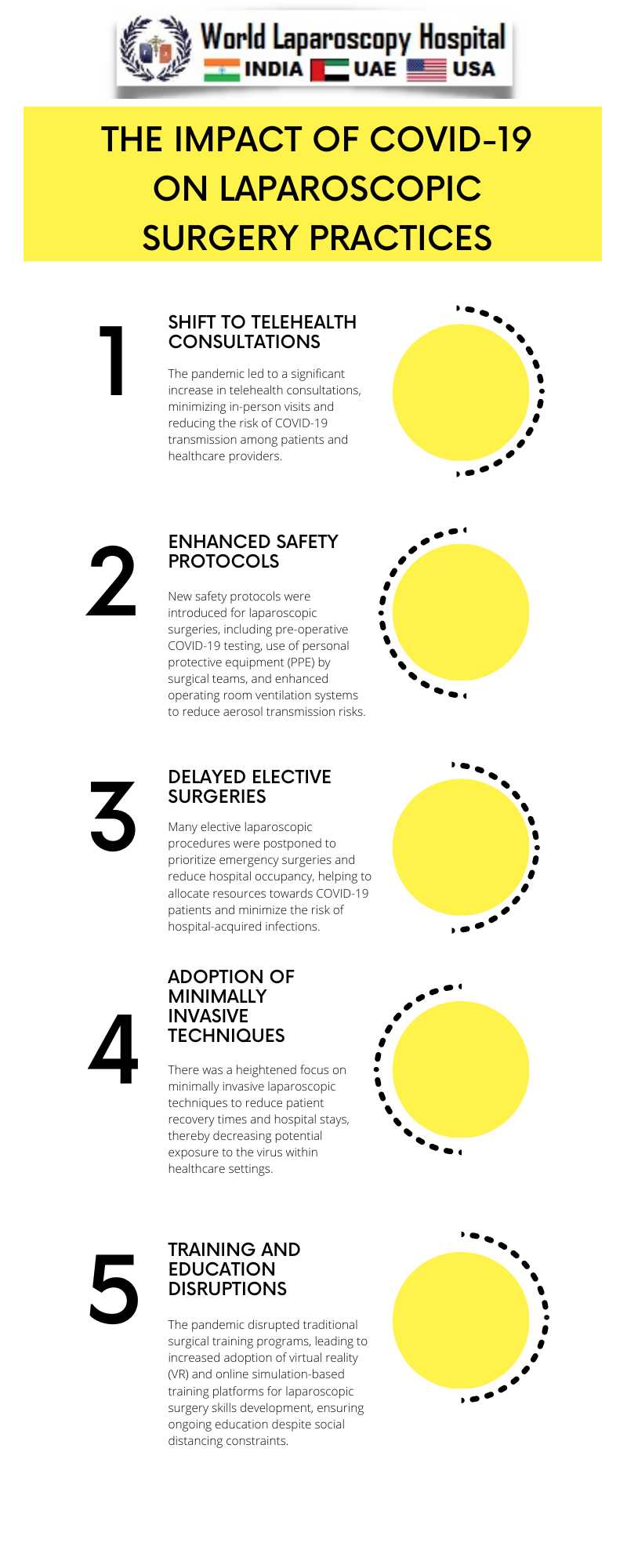
Adaptation of Surgical Protocols
The onset of the pandemic necessitated immediate alterations in surgical protocols to safeguard patients and healthcare workers from COVID-19 transmission. Laparoscopic surgery, known for its minimally invasive approach, faced scrutiny due to concerns about the potential aerosolization of the virus, especially during procedures that involve insufflation with carbon dioxide to create a working space within the abdomen. This led to the development of new guidelines emphasizing enhanced personal protective equipment (PPE), modifications in operating room ventilation systems, and the careful management of surgical smoke. The Society of American Gastrointestinal and Endoscopic Surgeons (SAGES) and other professional bodies issued recommendations to mitigate these risks, ensuring that laparoscopic surgery could continue safely where necessary.
Shift Towards Telehealth
The pandemic accelerated the adoption of telehealth, transforming patient consultations, follow-ups, and even some aspects of surgical education. Telemedicine has been particularly beneficial in preoperative and postoperative care, allowing surgeons to evaluate patients remotely, thereby minimizing hospital visits and reducing the risk of COVID-19 exposure. This shift has not only preserved valuable healthcare resources but also highlighted the potential for increased efficiency and patient satisfaction in surgical care.
Impact on Training and Education
Surgical training and education have faced significant disruptions due to the pandemic. The reduction in elective surgeries, combined with the reallocation of medical personnel to COVID-19 care, has led to fewer opportunities for hands-on training. Additionally, the cancellation of in-person conferences and workshops has limited the traditional avenues for continued professional development. In response, there has been a notable pivot towards virtual platforms for surgical education, including online courses, webinars, and virtual reality simulations. While these adaptations offer new learning opportunities, the absence of real-life surgical experience poses challenges for the proficiency and confidence of emerging surgeons.
Patient Care and Surgical Outcomes
The pandemic's strain on healthcare resources has led to the postponement or cancellation of many elective laparoscopic surgeries, with significant implications for patient care. Delays in surgical treatment can exacerbate health conditions, lead to poorer outcomes, and increase the psychological stress on patients awaiting surgery. However, the crisis has also spurred innovations in patient triage and the prioritization of urgent cases, underscoring the importance of adaptability in surgical care.
Conclusion
The impact of COVID-19 on laparoscopic surgery practices is multifaceted, encompassing adjustments to surgical protocols, the integration of telehealth, challenges in training and education, and the reorganization of patient care. While the pandemic has presented unprecedented challenges, it has also propelled the surgical field towards innovative practices and emphasized the resilience of healthcare systems in the face of adversity. As the world continues to navigate the pandemic, the lessons learned will undoubtedly shape the future of laparoscopic surgery and surgical care at large.